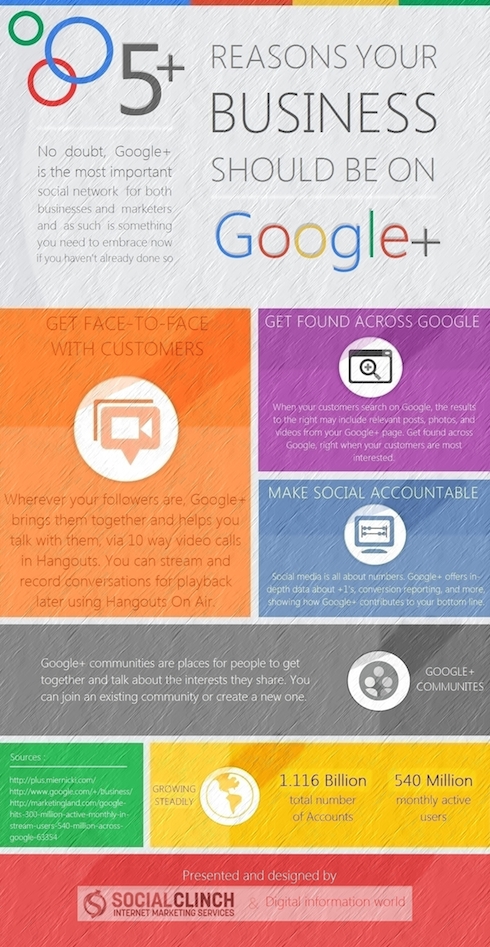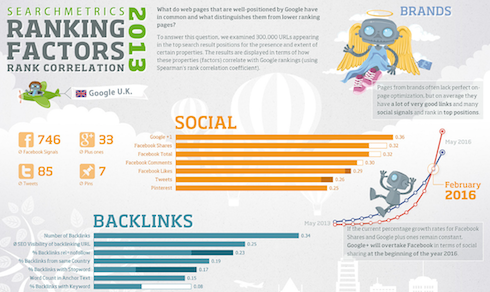By adaptive - June 3rd, 2014
Is Google+ really so complex that you need a grimoire and a wand to make it work?
In the first part of this series we asked whether Google+ was about to keel over and die at the departure of one of its heads, Vic Gundotra. It apparently is nowhere near as dead as people thought it would be. In part two of this series we will cover how to get the most out of Google+ as a business.
“As with any social network, you need to review and understand your business’ objectives and be realistic about the resources available to you,” says Amanda Kouwenhoven, head of engagement at Axonn Media. “Familiarise yourself with the network’s features and always keep customer experience in mind. The best way to drive engagement is to generate interest and add value.”
Daniel Booth, Marketing Manager at Jelf Small Business adds: “Get your profile up-to-date including all important information, links and brand design elements. Build your audience by interacting and engaging with individuals and communities without spamming or hard selling. Create honestly useful, interesting and visually stimulating content to share with your audiences.”
Content is always key to success on any social platform, regardless of brand or methodology. You can find expert advice, guidance and tips in our Content series here. Once you have your content concepts sorted, the trick is to really look at what content works on Google+ and how to utilise its unique properties more effectively.
“The most tangible of benefits on Google+ is SEO,” says Gayane Margaryan, Online Communications Associate at the African Wildlife Foundation. “As all marketers are focused on bettering their search rankings, Google+ is a tool in your arsenal where you can repurpose and share your content, putting it in front of new audiences and creating links that pass on equity. Businesses need to integrate it into their marketing strategies.”
Kouwenhoven reveals five elements that work towards your brand’s SEO on Google+:
- Search results can be enhanced by the inclusion of rich snippets in SERPs via authorship and publisher mark-up. This can increase click-through rates, build credibility and trust.
- Public posts are indexed for search by Google so specific posts can be ranked for specific terms. This raises the value of quality engagement on the page.
- The Google Knowledge Graph ensures the most relevant results are retrieved for users and information for Google+ is included in these results and displayed on the right-hand side of SERPs, increasing visibility and click through.
- Quality activity and reviews impact local search visibility.
- Google supports hashtag searches.
It’s in the Search
Search engine masters created Google+. Every byte and code is wrapped around concepts such as reach, coverage and SEO and as the search engine has evolved, so have the algorithms and methodologies. The social platform is a superb tool for tapping into this potential and really extending the reach of your brand,
“Google+ is the perfect social media channel to use for SEO,” says Francois Muscat, Internet Marketing Consultant at WSI. “Their search algorithm has changed tremendously over the last couple of years because their number one goal is to provide the best user experience.”
Muscat points out that the old way of doing SEO where the landscape consisted of creating keyword rich content resulted in people manipulating search results with spam from sites that were developed around beating the algorithm and that Google has adapted to this with solutions such as Google Authorship and social signals such as +1.
Google Authorship allows for people to claim their content online by following some simple instructions and adding in verifiable content to sites. Sites that contain credible content are given more authority in Google’s eyes and which, in turn, boost rankings. Real people and real content are now given priority and this is trick that the business cannot afford to ignore.
“I am seeing anecdotal evidence of an increasing rise of organic traffic on my own site and my employer’s site since becoming highly active on Google,” says Richard Eliason, author of 50 Things To Do On Google+ Right Now. “While it is too early to isolate Google+ as the benefactor, this could be the result of preferential rankings for our content as we influence more followers’ search results through Google’s personalised search. As a digital marketer I see more benefits from using Google+ to raise a brand’s profile than any other social media right now.”
A trick or two
Google+ is quite easy to learn and there are plenty of how-to guides out there that will teach you everything your business needs to know, however, it’s always worth getting good tips and tricks from the experts.
“Avoid sharing text heavy posts without visuals and don’t forget to include links to your website,” says Margaryan. “Give your business a location which is important for Google Places and tell people who you are as a business. Also, market your services so you get found on Google+ and in search.”
According to Julia Louw, head creative imageer at Troika Imageering Works brands who get onto the Google+ bandwagon need to be aware that many users find Google a bit “stalky”.
“Marketers need to be aware of staying on their audience’s good side,” she adds. “So far the network’s programmers have not demonstrated social graces, which is not a great trait in a social network. Currently they are prepping a strategy to use the faces and names of their users [http://www.google.com/policies/terms/changes] to advertise products to their friends. Just because you can take advantage of the possibilities, doesn’t mean you should.”
Kouwenhoven recommends that you find appropriate influencers and engage with them by mentioning them in relevant pots and linking your page to theirs. She also advises to create a strategy with long-term, business appropriate objectives, as success on Google+ requires a lot of work, decent resources and realistic goals.
“Don’t be afraid to follow your competitors and even engage with them,” says Eliason. “This is a good chance to learn from them. And businesses who don’t have the time to run a blog and still realise the power of content should run hangouts with cherry-picked guests to discuss a given topic.”
Muscat adds five don’ts to the mix:
- Don’t create a profile just for the sake of having one.
- Don’t spam your profile with links and content nobody will find interesting.
- Don’t only use Google+ for the added SEO benefit.
- Don’t post irrelevant content.
- Don’t’ be afraid to add your own opinion to a discussion relevant to your niche.
Daniel Magrin, client services manager at Belgrin concludes: “Google+ is best used to share relevant content and use links back to your website. The best function is the fact that it works organically with your SEO to boost your rankings, and this is something you can’t ignore. Use it to connect with the right circles (pun intended).”
In the third part of this series we will be examining how to make use of the tools that Google gives you, push the SEO and your brand and how to use the advertising intelligence built into the platform.
Image Source: Freedigitalphotos.net


